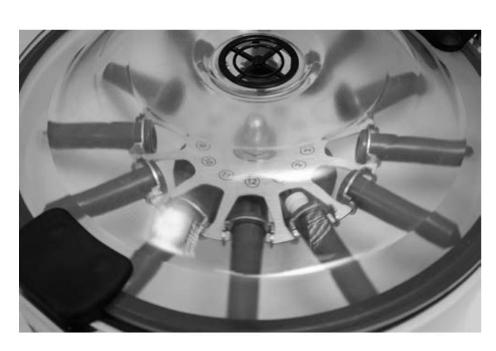A laboratory centrifuge like that shown in ( Figure 7.11) operates at a rotational speed of 12000
Question:
A laboratory centrifuge like that shown in ( Figure 7.11) operates at a rotational speed of 12000 rpm.
(a) What is the magnitude of the centripetal acceleration of a red blood cell at a radial distance of \(8.00 \mathrm{~cm}\) from the centrifuge's axis of rotation?
(b) How does this acceleration compare with \(g\) (the gravitational acceleration on the surface of the Earth)? THINKING IT THROUGH. Here, the angular speed and the radius are given, so the magnitude of the centripetal acceleration can be computed directly from Equation 7.10. The result can be compared with \(g\) by using \(g=9.80 \mathrm{~m} / \mathrm{s}^{2}\).
THINKING IT THROUGH. Here, the angular speed and the radius are given, so the magnitude of the centripetal acceleration can be computed directly from Equation 7.10. The result can be compared with \(g\) by using \(g=9.80 \mathrm{~m} / \mathrm{s}^{2}\).
Equation (7.10):
Fantastic news! We've Found the answer you've been seeking!
Step by Step Answer:
Related Book For 

College Physics Essentials Electricity And Magnetism Optics Modern Physics Volume Two
ISBN: 9781032337272
8th Edition
Authors: Jerry D. Wilson, Anthony J. Buffa, Bo Lou
Question Posted:





